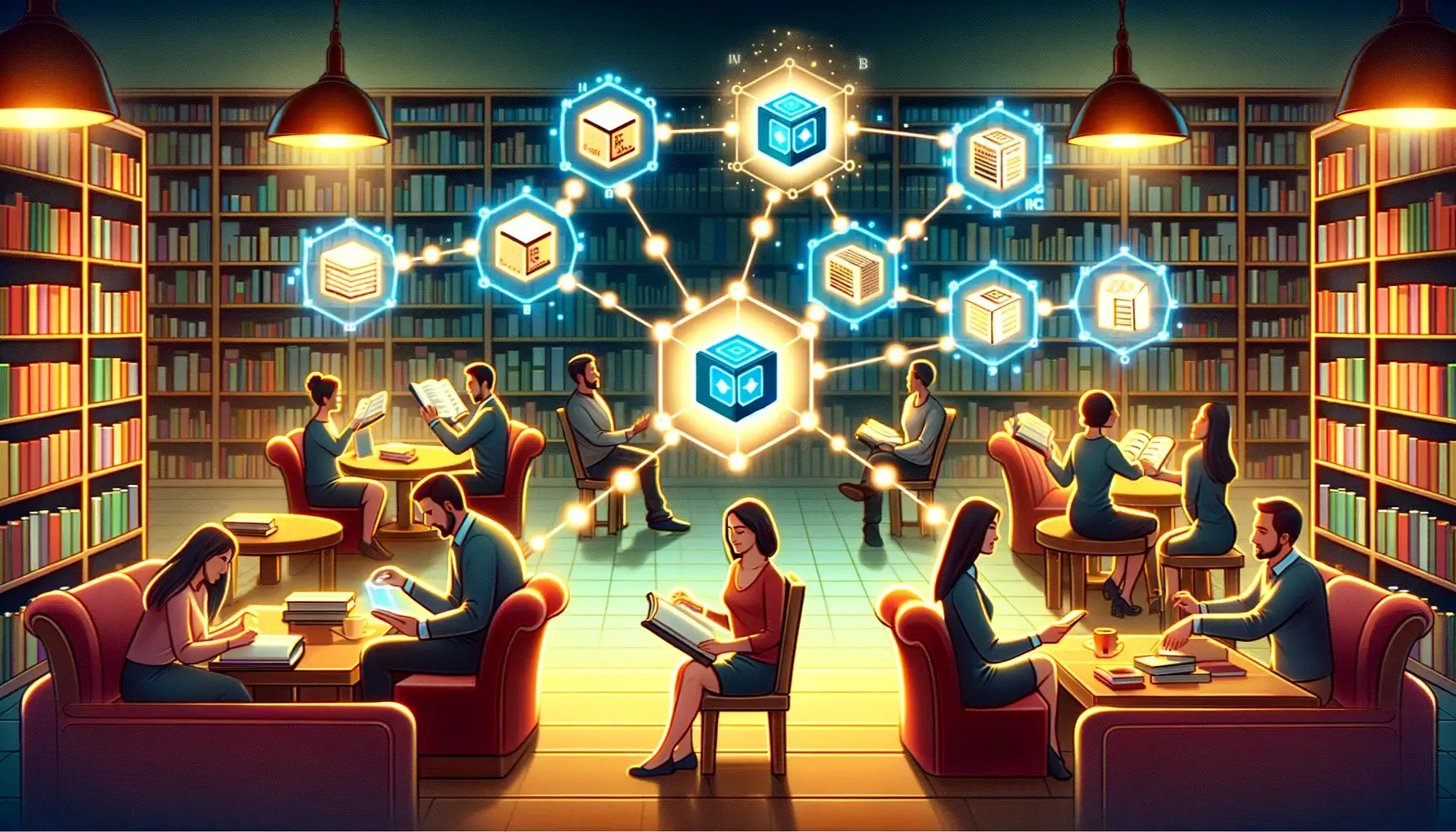Imagine you’re part of a huge international book club. Members from all over the world read and exchange books, and every time a book is lent or returned, the transaction is recorded. Instead of relying on a single librarian to keep track of all these transactions, what if every member of the book club kept their own record? Whenever a book changes hands, all members update their records simultaneously after confirming the transaction’s authenticity. This decentralized system is similar to how blockchain technology operates.
The Birth of Blockchain:
Blockchain technology was first conceptualized in 2008 by an unknown person (or group) under the pseudonym Satoshi Nakamoto. Nakamoto introduced blockchain through the creation of Bitcoin, a decentralized digital currency. The idea was to remove the need for a central authority like a bank, allowing people to trade directly and securely with one another. In fact, this theory was written before in different researches but Nakamoto gave this life removing all flaws.
A blockchain is essentially a digital ledger of transactions that is duplicated and distributed across the entire network of computer systems on the blockchain. Each block in the chain contains a number of transactions, and every time a new transaction occurs, it is added to every participant’s ledger. This decentralization ensures transparency and security.
How Blockchain Works:
To understand how blockchain functions, think about the book club. When a member wants to borrow a book, they announce their intention to the entire club. Members then verify the availability of the book and confirm the borrower’s identity. Once verified, this transaction is added to everyone’s record, or block, which is then linked to the previous block, forming a chain of transactions that cannot be altered without the consensus of the majority.

Blockchain’s Evolution:
Initially, blockchain was mainly associated with Bitcoin. However, its potential far exceeded just digital currency. In 2015, Ethereum was introduced, bringing with it the concept of smart contracts—self-executing contracts with the terms directly written into code. This advancement opened the door for blockchain applications in various fields like supply chain management, voting systems, and beyond.
Challenges and Developments:
Despite its groundbreaking potential, blockchain faces several challenges, including scalability, high energy consumption, and slow transaction speeds. For example, Bitcoin’s blockchain can only handle a limited number of transactions per second, leading to bottlenecks during high-demand periods.
To overcome these issues, new solutions have been proposed, such as Directed Acyclic Graphs (DAGs).
Introduction to DAGs:
A DAG is a different type of data structure that offers an alternative to the traditional blockchain. Instead of having a single, linear chain of blocks, DAGs use a graph structure where each transaction is linked to multiple other transactions. This allows for much greater scalability and faster transaction processing.

DAG in Action:
One prominent implementation of DAG is IOTA, a cryptocurrency designed for the Internet of Things (IoT). In a DAG-based system like IOTA, each transaction confirms two previous transactions, forming a tangled web of interconnected transactions. This eliminates the need for miners, reduces transaction fees, and increases the speed of the network as more transactions are made.
The Current Landscape:
Today, blockchain technology continues to advance. Numerous projects are working on improving efficiency, security, and scalability. Blockchain is being integrated into various industries, from finance and healthcare to supply chain management and entertainment. Meanwhile, DAGs and other innovative data structures are being developed to address the limitations of traditional blockchains.
Conclusion:
Blockchain technology, with its promise of decentralization, transparency, and security, has the potential to transform many sectors. While it still faces some challenges, ongoing innovations like DAGs are paving the way for a more scalable and efficient future. As we continue to explore the possibilities of blockchain and DAG technology, we can expect to see even more transformative changes in how we conduct transactions and manage data in our increasingly digital world.

